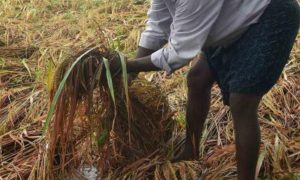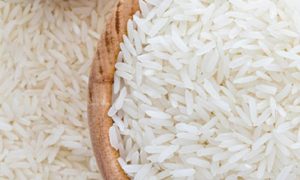Europe’s wheat crops get rain relief after torrid end to spring

The return of rain to northern Europe should help wheat crops after a hot, dry end to spring and may avert dire yield losses seen in drought-hit Spain, analysts and traders said.
Forecasters have reduced their outlook for this year’s wheat harvest in Europe to nearer last year’s drought-affected level, warning of further cuts if dryness persists.
In France, where harvesting is starting, showers since last weekend are expected to aid final growth of crops in the north, despite localised storm damage.
Good yields are anticipated even though the recent parched spell has dented earlier talk of record levels.
“Up to mid-May the yield potential was very high, so inevitably a little was lost with the hot, dry spell,” Benoit Fayaud, analyst with Strategie Grains, said of French wheat.
Along with increased planting, favourable yields are expected to push the French soft wheat crop above last year’s 33.7 million metric tons, with market estimates between 35 and 37 million.
Early harvesting of winter barley, a pointer to the wheat crop, was showing good yields and quality, traders said.
The outlook was also promising in Britain, where rain returned sooner.
“Heading into harvest this year prospects remain encouraging from a yield perspective and the recent rains will have restored confidence,” analyst Peter Collier of CRM Agri said.
The situation was more uncertain elsewhere in northern Europe, despite rain this week and more forecast in coming days.
In Germany, regular rain was needed to counter crop stress in northern and eastern zones that have turned very dry.
“In mid-May, some fields were too wet for vehicles to drive on, now plants are suffering from massive stress from dryness throughout Germany,” said Guido Seedler of Germany’s association of farm cooperatives.
The association this week cut its forecast of this year’s German wheat crop by over 400,000 tons compared with May, putting its projection nearly 3% below 2022 output at 21.87 million tons.
In Poland, wheat in the north, northwest and the centre suffered from heat and dryness, though crops in the south look good, said Wojtek Sabaranski of analysts Sparks Polska.
“Recent rains helped a bit, but they were not sufficient to solve the drought problem in these regions,” Sabaranski said.
“Therefore, some yield losses, locally major, have to be taken into consideration.”
The Polish wheat crop could fall to 12.0-12.2 million tons, down 5-6% from last year, Sabaranski forecast.
Yields in Scandinavia may continue to wane after the parched end to spring, contributing to an expected decline in Europe’s barley crop after heavy losses in Spain, Strategie Grains’ Fayaud said.
The consensus among forecasters like the European Union’s crop monitoring service is that rain in Spain in the past month came too late to revive wheat and barley hit by earlier drought.
But Romania may surpass last year’s drought-hit wheat production as conditions are more favourable in the west compared with the dry southeast that has raised concern, Fayaud added.
Source: Reuters (Reporting by Gus Trompiz in Paris, Michael Hogan in Hamburg and Nigel Hunt in London;Editing by Elaine Hardcastle)













